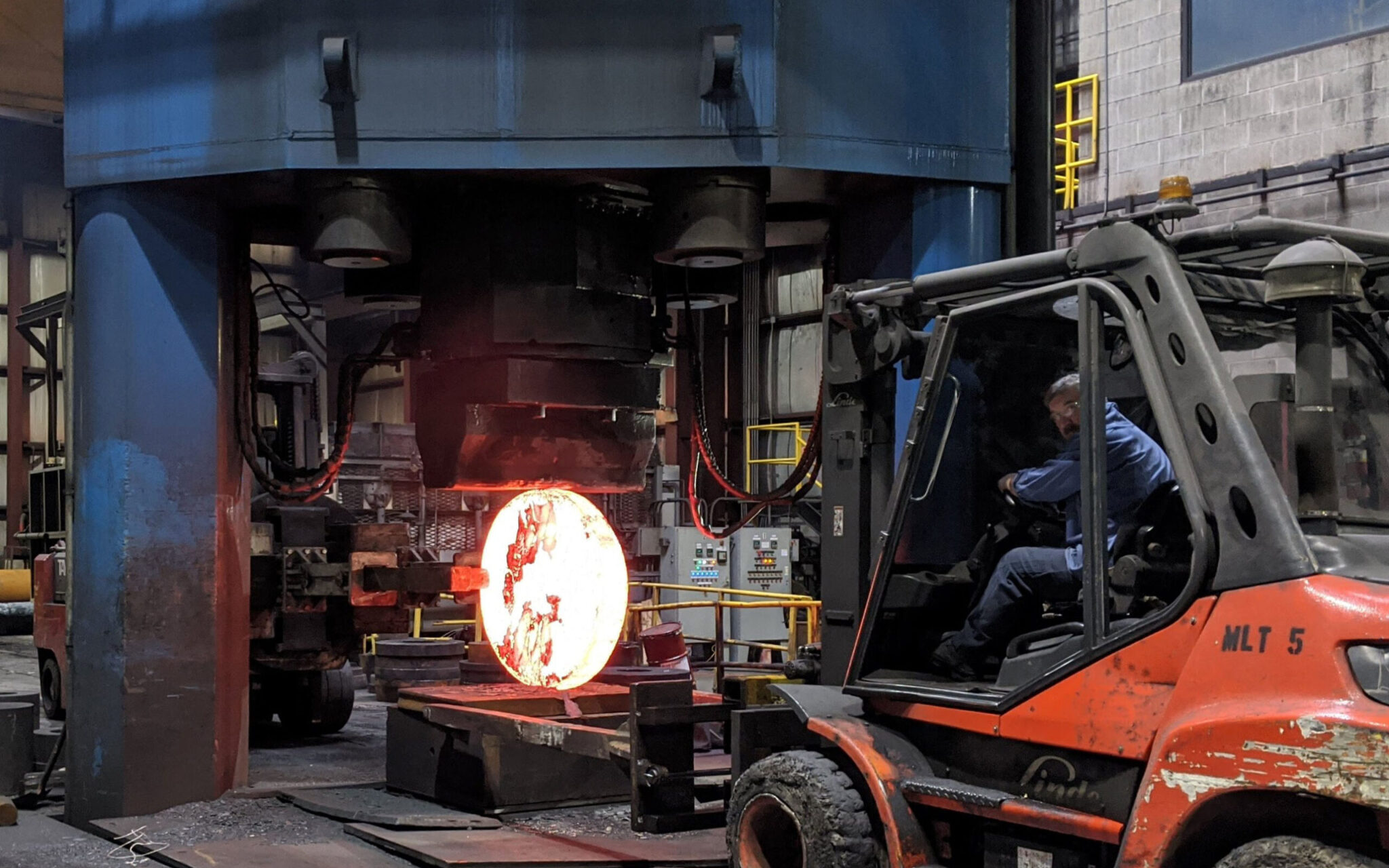While there are a lot categories for metal, the most important difference is whether a metal is ferrous or non-ferrous. Anderson Shumaker forges in both ferrous and non-ferrous materials, but what is the different between these categories? Let’s learn more.
What Are Ferrous Metals?
Simply defined: ferrous metals include iron in their composition, often as a large elemental percentage. For example, if iron isn’t already the most abundant element, then it’s the second or third.
Ferrous metals have a wide variety of alloying elements that dictate their overall characteristics. Common properties of ferrous metal include relatively high strength, especially when compared to tin, lead alloys, and copper. Most of these metals are also magnetic (with the exception of austenitic stainless steel). Ferrous metals are usually hard, and prone to rust unless coated or alloyed with other elements.
Common Ferrous Metals:
- Alloy Steel: Alloy are made of iron alloyed with varying amounts of manganese, vanadium, copper, tungsten and other elements. These alloying elements give the steel tensile strength, hardness, toughness, ductility, and other critical properties. Dies, machining equipment, and tools use alloy steels.
- Carbon Steel: Carbon is a very popular ferrous metal. Most carbon steels are comprised of 90% of iron and 10% carbon. Due to its attributes, carbon steel is ideal for applications involving high temperature and pressure. For example, carbon steel is idea for gears, aircraft landing gear axles, and shafts for power transmissions.
- Stainless Steel: Stainless steel’s high amount of chromium helps it resist corrosion. Stainless steel is well-known for its smooth appearance and cleanliness. Its sanitation properties make it a popular choice for food industry products. It’s also heat and fire resistant, 100% recyclable, and corrosion resistant. These properties make it an excellent choice for aerospace.
What Are Non-Ferrous Metals?
Unlike ferrous metals, their non-ferrous counterparts do not contain a significant amount of iron in their chemical composition.
Just like ferrous metals, non-ferrous metals have a wide variety of alloying elements that dictate their overall characteristics. While it’s almost impossible to categorize non-ferrous metals by commonalities, they do have two common characteristics: they are not magnetic, and they do not corrode over time. Rust is iron oxide, and since non-ferrous metals are less than 1% iron by composition, there is not enough iron in them to rust.
Common Non-Ferrous Metals:
- Aluminum: This silvery metal is a popular non-ferrous forging material. Aluminum forgings are ideal for lighter-weight metal applications. This includes situations with harsh environments or require faster speeds and energy efficiency. For example, aluminum is ideal for aerospace parts and machine components that experience high pressure. As a result, we see a lot of aluminum forging in our forge shop.
- Nickel: Nickel-based alloys use nickel as their balancing metal. These metals are alloyed with iron, molybdenum, and chromium. Because they are on the high end of the corrosion scale, these grades exhibit high resistance properties and perform well under severe conditions. Nickel-based alloys have high wearability, heat resistance, corrosion resistance, and acid resistance. Therefore, these metals are important for components that must withstand harsh environments. For example, nickel-based alloys are found in aerospace, power generation, oil & gas, and chemical industries applications.
At Anderson Shumaker, we work in many metal grades, both ferrous and non-ferrous. Contact us today to learn more about our open-die forging operations and to get your projects rolling!
Need a Forge Shop Quote?
- Click Here: Request a Quote
- Contact: sales@andersonshumaker.com
- Website: https://andersonshumaker.com/
- Stock: Stock List (Metal Grades)







